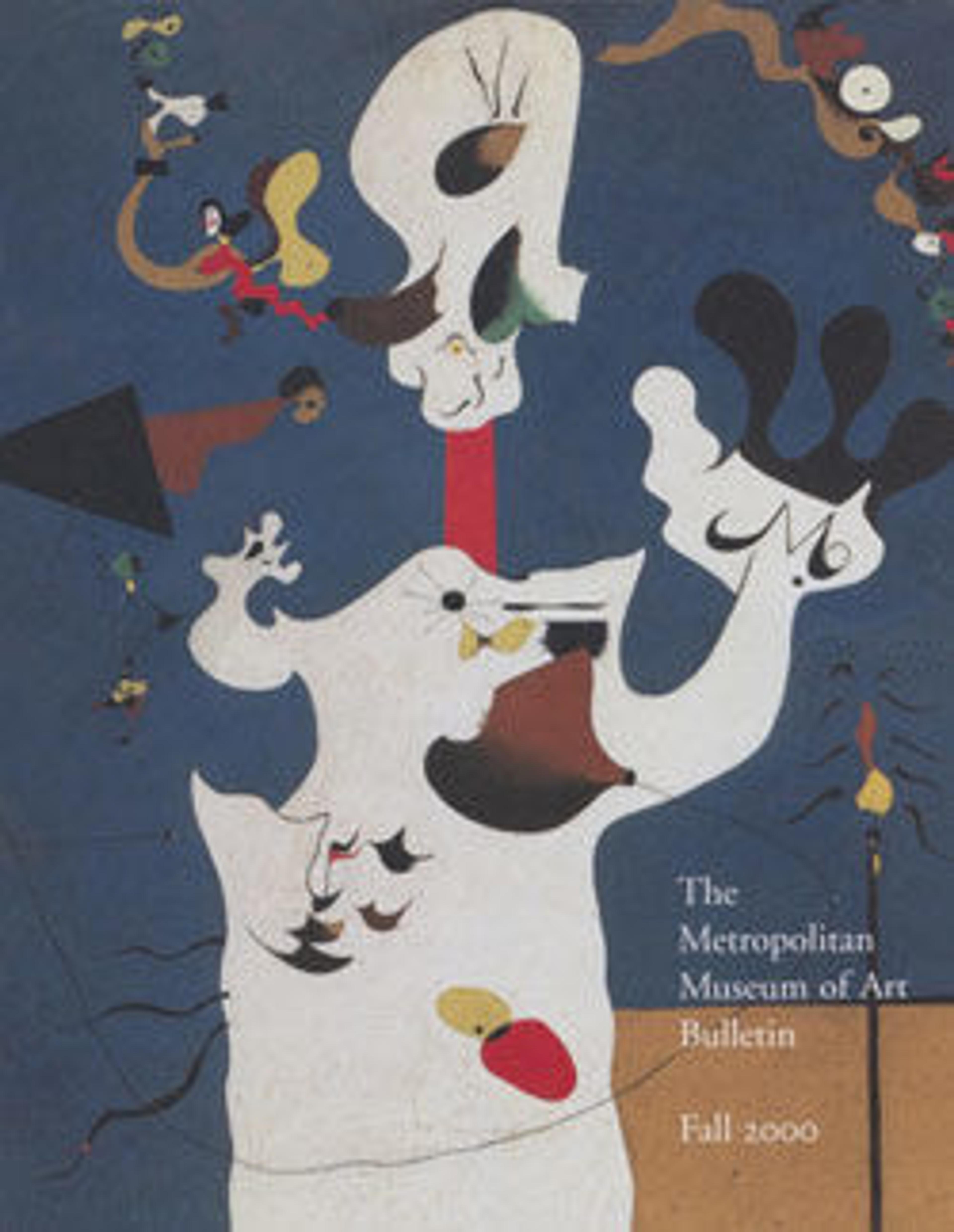Jean Paulhan
Dubuffet waited until he was forty to devote himself to art. A man of exceptional intelligence, he painted raw, although childlike, images that combine a bold handling of texture with a wry, dark sense of humor. The subjects of his early paintings are city streets, ordinary people performing everyday tasks, and likenesses of his friends. In 1945 Dubuffet had begun creating what he referred to as hautes pâtes, paintings in which a thick paste served as the ground, color was used sparingly, and contours were scratched like graffiti. The paste used for the ground was made of tar, asphalt, and white lead, often enriched with cement, plaster, or varnishes, to which sand, coal dust, pebbles, and pieces of glass or straw might also be added. Gradually, color virtually disappeared from his work altogether. In this portrait of Jean Paulhan, the ground and the paint surface are built up with heavy chalk, thus continuing Dubuffet's use of the hautes pâtes technique. Consistent with his "anti-art" position, Dubuffet rejected traditional portraiture, which he regarded as facile imitation. Instead of conveying a sitter's likeness or personality, he focused on certain odd features, which he then exaggerated. Paulhan's intense, close-set eyes, long nose, broad upper lip, two prominent upper front teeth, and thick mane of unruly hair are easily recognizable. His strangely monolithic form seems to emerge from plaster or chalk that has been smeared onto a dark wall; the lines of his face, outstretched hands, jacket, tie, and buttons have been scratched, like graffiti.
The painting of Paulhan was part of Dubuffet's large series of 170 portraits of the writers, poets, and painters who were his friends—his sole subject matter at the time. Between July 1945 and August 1947 Dubuffet drew and painted about twenty-eight portraits of Paulhan, a writer and critic, who was the editor of the literary magazine La nouvelle revue française from 1925 until his death in 1968. Paulhan's collected works fill five volumes and encompass books on modern painting; essays on rhetoric, language, logic, and love; and prefaces to erotic literature, including the works of Sade and Pauline Réage's Histoire d'O (1954), believed by many to have been written by Paulhan himself.
The painting of Paulhan was part of Dubuffet's large series of 170 portraits of the writers, poets, and painters who were his friends—his sole subject matter at the time. Between July 1945 and August 1947 Dubuffet drew and painted about twenty-eight portraits of Paulhan, a writer and critic, who was the editor of the literary magazine La nouvelle revue française from 1925 until his death in 1968. Paulhan's collected works fill five volumes and encompass books on modern painting; essays on rhetoric, language, logic, and love; and prefaces to erotic literature, including the works of Sade and Pauline Réage's Histoire d'O (1954), believed by many to have been written by Paulhan himself.
Artwork Details
- Title:Jean Paulhan
- Artist:Jean Dubuffet (French, Le Havre 1901–1985 Paris)
- Date:1946
- Medium:Acrylic and oil on Masonite
- Dimensions:42 7/8 × 34 5/8 in. (108.9 × 87.9 cm)
- Classification:Paintings
- Credit Line:Jacques and Natasha Gelman Collection, 1998
- Object Number:1999.363.20
- Rights and Reproduction:© 2025 Artists Rights Society (ARS), New York
- Curatorial Department: Modern and Contemporary Art
More Artwork
Research Resources
The Met provides unparalleled resources for research and welcomes an international community of students and scholars. The Met's Open Access API is where creators and researchers can connect to the The Met collection. Open Access data and public domain images are available for unrestricted commercial and noncommercial use without permission or fee.
To request images under copyright and other restrictions, please use this Image Request form.
Feedback
We continue to research and examine historical and cultural context for objects in The Met collection. If you have comments or questions about this object record, please contact us using the form below. The Museum looks forward to receiving your comments.
